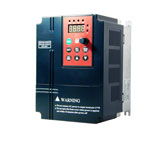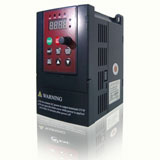How the motor output full torque with a VFD?
To produce 100% torque in a motor, the motor terminals voltage and frequency must match the Motors nameplate volts to hertz ratio. (690Volt motor at 60 hertz is 11.5V/Hz)
At 5% speed, this is 3 Hz which requires 34.5 volts at the motor.
If the 100% torque at 5% speed is what you require, then the variable frequency drive must be able of producing the additional voltage drop in the motor feeder cable and the output sine wave filter. Subject to the motor feeder length, the voltage drop at full load could be 10 to 15 volts and the sine wave filter may have even a higher voltage drop across it.
The VFD must be able to put out the 34.5 volts plus the voltage drop in the cable and sine wave filter which may be 60 volts out at 3 hertz to get the 34.5 volts at 3 hertz at the motor terminals. Feature such as IR compensation or Voltage Boost in the VFD need to be adjusted to get the desired V/Hz at the motor.
At full speed you may find that you cannot obtain 100% torque as the Voltage drop in the feeder cable and sine wave filter (same as at 5% speed at full load) may cause the V/Hz to be lower than 11.5V/Hz. The motor will then be required to operate in the overload range proportional to the % voltage drop below name plate voltage.
At 5% speed, this is 3 Hz which requires 34.5 volts at the motor.
If the 100% torque at 5% speed is what you require, then the variable frequency drive must be able of producing the additional voltage drop in the motor feeder cable and the output sine wave filter. Subject to the motor feeder length, the voltage drop at full load could be 10 to 15 volts and the sine wave filter may have even a higher voltage drop across it.
The VFD must be able to put out the 34.5 volts plus the voltage drop in the cable and sine wave filter which may be 60 volts out at 3 hertz to get the 34.5 volts at 3 hertz at the motor terminals. Feature such as IR compensation or Voltage Boost in the VFD need to be adjusted to get the desired V/Hz at the motor.
At full speed you may find that you cannot obtain 100% torque as the Voltage drop in the feeder cable and sine wave filter (same as at 5% speed at full load) may cause the V/Hz to be lower than 11.5V/Hz. The motor will then be required to operate in the overload range proportional to the % voltage drop below name plate voltage.



